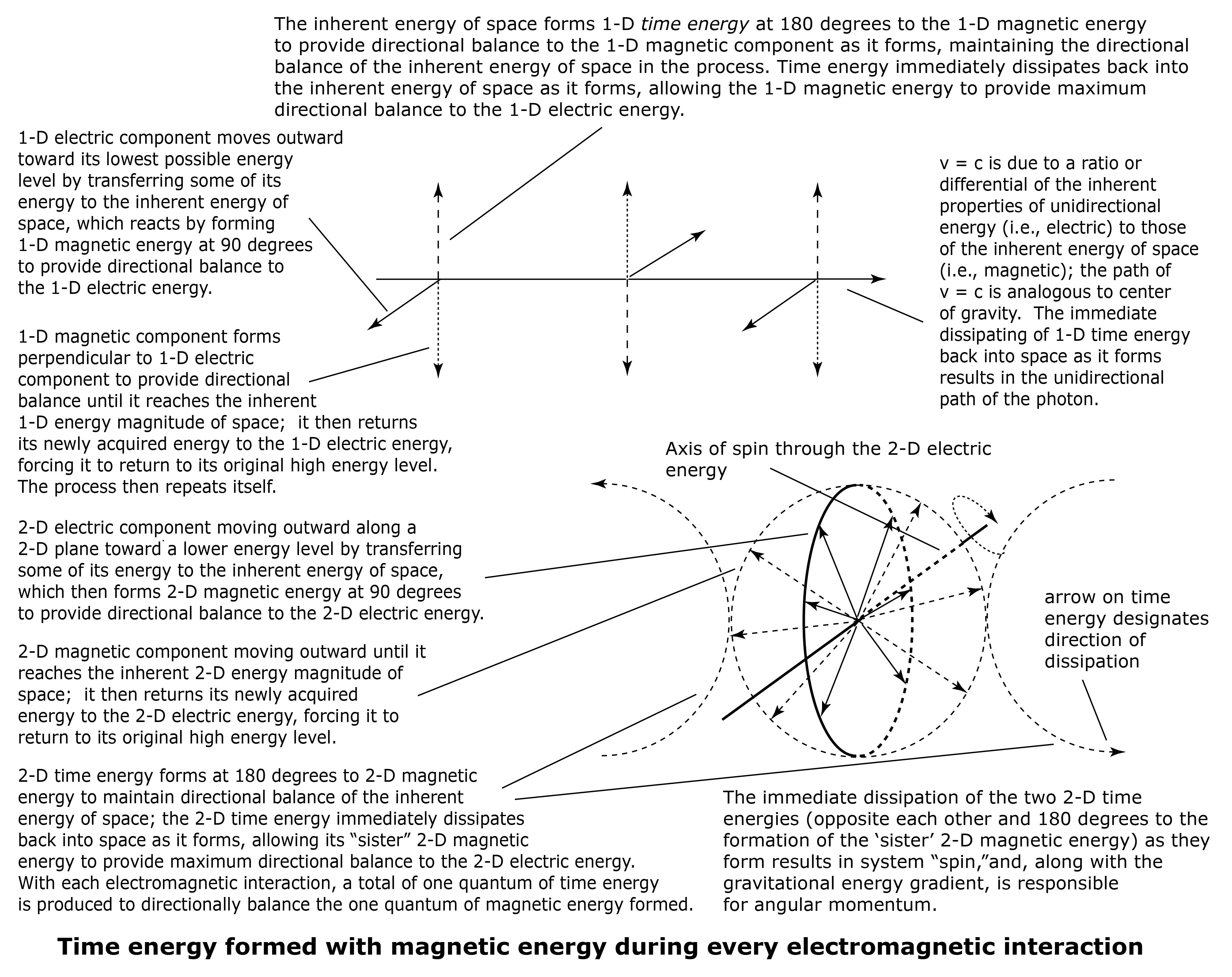 In a 1-D electromagnetic (e-m) energy system (i.e., photon), the 1-D electric energy moves toward a lower energy level by transferring some of its energy to the inherent energy of space, which reacts by forming opposing 1-D magnetic energy to provide directional balance to the 1-D electric energy.
In a 1-D electromagnetic (e-m) energy system (i.e., photon), the 1-D electric energy moves toward a lower energy level by transferring some of its energy to the inherent energy of space, which reacts by forming opposing 1-D magnetic energy to provide directional balance to the 1-D electric energy.
The 1-D magnetic energy forms until it reaches its maximum energy level – the inherent energy magnitude of 1-D space – equal to one quantum, or “h” amount of energy (Planck’s constant).
As the inherent energy of space produces the unidirectional 1-D magnetic energy, it simultaneously forms an equal and opposing 1-D time energy at 180 degrees to the 1-D magnetic energy to provide directional balance to the formation of the 1-D magnetic energy, thereby maintaining the directional balance of the inherent energy of space. The 1-D time energy immediately dissipates back into the energy of space as it forms, once again becoming basic 1-D units of the energy of space in random motion and distribution.
Unlike its ‘sister’ 1-D magnetic energy, 1-D time energy does not accumulate one quantum of energy at a time, but immediately dissipates back into space, at a rate of one quantum of 1-D energy per electromagnetic interaction. As a result, the 1-D e-m energy system (photon) moves unidirectionally along a path perpendicular to the 1-D electric and 1-D magnetic energy. The time energy essentially disappears as it forms, like a zipper being opened, forcing the 1-D e-m energy system to move in that same direction. The 1-D e-m energy system moves at a rate of v = c due to the ratio of the inherent properties of electric energy to those of magnetic energy.
In a 2-D electromagnetic energy system (e.g., an electron), the process is essentially the same, except that the system is composed of 2-D electric energy moving toward a lower energy level by transferring its energy to adjacent space, which reacts by forming 2-D magnetic energy perpendicular to the 2-D electric energy. As the 2-D magnetic energy forms, the inherent energy of space also produces 2-D time energy to oppose the unidirectional magnetic energy at 180 degrees to maintain the directional balance of space. Since the 2-D magnetic energy forms as a 2-D circular plane, the 2-D time energy forms in two places, opposite each other and adjacent to the circumference of the 2-D magnetic energy (see illustration below). Each of the 2-D time energies form and dissipate back into space in opposing directions to each other to maintain directional balance.
As the two 2-D time energies immediately dissipate back into space as they form, the 2-D e-m energy system moves in that direction, resulting in a system spin about an axis. This in turn results in the 2-D e-m energy system possessing angular momentum and two poles that differentiate between ‘up’ and ‘down’ spin relative to a system ‘center’ such as the center of a particle or an atom or a nucleus.
